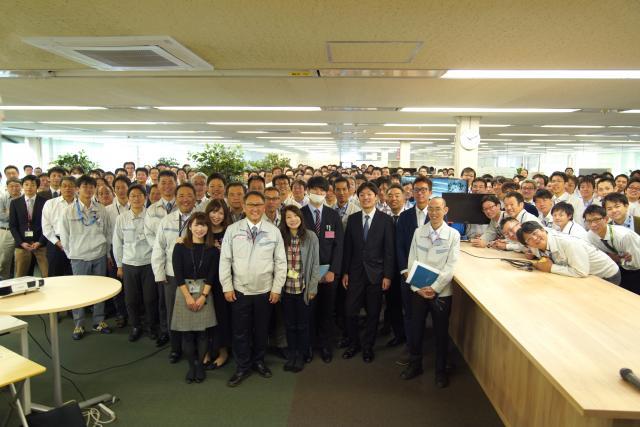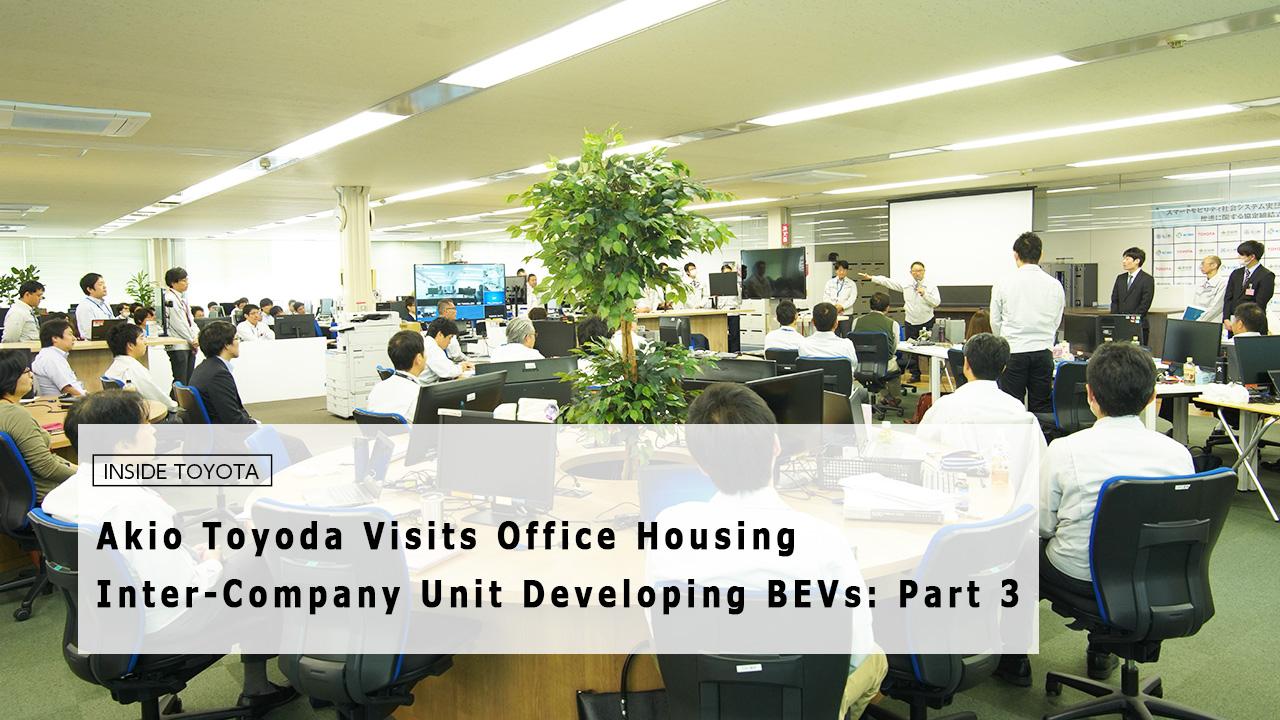
Akio makes a visit to a special unit called the "ZEV B&D Lab," which examines both BEV product development and business implications of ZEVs -- but not all members are from Toyota.

This article is Part 3 of the series following Akio’s surprise visit to the ZEV B&D Lab Division. Part 1 covered Akio’s initial opening comments up to the point where he decided to hold an impromptu Q&A session. Part 2 covered the first part of the Q&A session. The following covers excerpts from the rest of that Q&A session.
Question:
As an employee of Mitsui & Co., Ltd., I don’t fit the mold of the usual type within the ZEV Factory. I am not an engineer, and coming from a trading company, I am more focused on sales and business development, so I would like to hear your candid thoughts about the ZEV Factory’s inclusion of a business strategy planning team.
Akio:
I genuinely feel that having a B&D (business and development) division in the ZEV Factory is an extremely positive thing. That is to say, in a large corporation, the various functions are divided up in silos, so that business planning is only considered by people in business planning and development by people in development, keeping the roles separate. Even within the development function, it is further broken down into separate segments and there is a danger of losing sight of the whole picture. While it is good to have specialized fields, I think it is a fantastic idea to have, at the very least, business and development elements in the same room, breathing the same air and sharing the same atmosphere.
So, I have a question for you. Do you like cars? Have you ever bought a car?
(Team member who asked the question):
Yes. I own a Prius.
Akio:
So that means you went to a car dealer and bought it yourself?
(Team member who asked the question):
Yes, of course.
Akio:
So, from an overall viewpoint, although that is just one time, or “n-1”, it was still an experience for you. When buying your car, I think you probably had lots of struggles. You may have felt things like, “I like this option, but it’s expensive”. I urge you to value those feelings, even if it was just a single “n-1” event.
At any rate, when thinking about business, we consider various elements based on averages. However, if there is only the one case, this is what you felt yourself. It embodies the facts, the truth you have. Along these lines then, there should definitely be some empathy that comes out of this in the n-2, n-3, and n-4 iterations of this activity. Thus, I urge you to avoid using only averages and statistics when considering how to sell a car.
I say this because that is how Toyota sells cars (with statistics and trends). So we have to step away from that and take a step into retail ourselves. In the long run, there may be some in the company who oppose what I say by pointing out that we are basing strategy on fewer cases, but that “n-1” case is the starting point. That is a definite fact. It is something you feel yourself. If you base your thoughts on this, wouldn’t this lead you to think about ways to make something less expensive that you had considered expensive, or in other cases, think about items that you would still buy even if they were expensive? So what would these things be? You should start by thinking about these things from your own feelings. This will lead to others who empathize with you. I strongly urge you to use this “n-1” as a starting point.
Upon hearing the discussion about “n-1,” another hand shot up, this time by a Toyota veteran, who had a request for Akio.
Question:
This is more of a request than a question, but related to the idea of “n-1,” I have always thought that it would definitely be a good idea for many of Toyota’s younger team members from Japan to spend time overseas.
Akio:
I think so too.
(Team member who asked the question):
I see. That is all I had to say.
Worksite:
(The gathered team members share a moment of laughter).
Akio:
I would like to encourage a corporate culture where, rather than being posted to a job at the headquarters, a posting at a place close to where the work is actually taking place is the elite posting. You can learn the true nature of things, in the end, when you are young and have a strong ability to absorb new learning and experiences. That’s why I too have long been saying, “go overseas.” However, this is not an easy thing to achieve. That is because of my lack of ability. I think that we really will be carrying this out soon. It took 10 years to get to this point.
(Team member who asked the question):
I will be retiring soon. I love traveling to different countries around the world and when I see the cars in various different places and the way these cars are used, I often think about how much I wish the Toyota designers could see this for themselves. In fact, of the 10 million cars being sold right this year, about seven million are made overseas. When I think about how many Japanese people there are in Toyota, the ratio is at the opposite end of the scale, at around 8:2 or even 9:1. Although originally Japanese, with this many cars sold overseas, I have thought for a long time that if many more members would go overseas, our cars would sell even better.
Akio:
Not sell even better, but we would make ever-better cars.
(Team member who asked the question):
Yes, that’s right. We would make ever-better cars. I would like to see us selling cars that meet the needs or, are the cars that consumers in that locality are truly wishing for.
Akio:
Yes, yes, that is why we are doing in the Five Continents Drive Project.
Why did we start this project? The idea for this project came from our experience in the 24 Hours Nürburgring endurance race. Nürburgring* is more like driving on a demanding public road, rather than a circuit race.
I myself took part as a driver in the continuous 24 hour race on this demanding road, and I have always thought that the mechanics and engineers from our company who worked together with us on that team were able to gain really good experience.
I wanted to see many more employees experience this, but this is an experience that is only made possible by the Nürburgring road itself and the 24 hour race is only held there once a year…
We could not provide the same experience for many people, but as you have pointed out, there are many different kinds of roads around the world. That is what prompted the idea for the Five Continents Drive Project.
Although the number of participating people who have driven or will drive on these roads is still limited, we created a project with the intent to provide many more people the opportunity to experience driving on different roads around the world.
There are a number of proving grounds in Japan, and they have road surfaces such as corrugated or undulating (bumpy). They are modeled after actual roads around the world, but a car in a driving test in Japan can only be driven several hundred meters at most.
However, people who drive the local roads of the world, experience long, marathon rides over “washboard” roads for as long as two days in some cases.
For people who have experienced this, even when driving on a corrugated road for just several hundred meters at a proving ground in Japan, they are able to imagine to some extent the feelings of a local person who must ride over such a surface for much longer. I think the way a car is driven for test drive purposes will definitely change, depending on whether the driver has only driven the few hundred meters of corrugated roads or has driven actual local roads.
Therefore, “driving” is not just the experience of driving in a circuit or rally, as I think that what we learn from everyday roads is absolutely essential.
By the way, have you driven on other locations around the world?
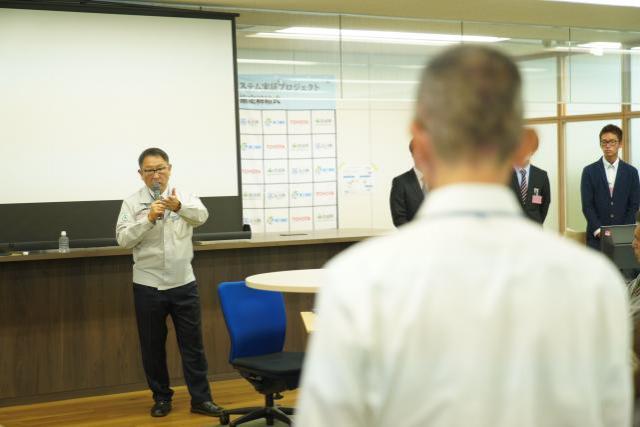
(Team member who asked the question):
I’ve only driven in the United States. Although I personally have not driven in Southeast Asia, when I saw how people use their cars there, I often found myself thinking, “Wow, I hadn’t imagined cars being used like this.”
Akio:
That’s right, over there no one pays attention to maximum loads, right? That’s why it’s necessary to understand such actual conditions or facts.
For example, a driver may use a Land Cruiser roughly, but the important thing is that it transports human life and returns home safely.
That is why that car is supported by 10 million customers, and that one product exemplifies the value of Toyota’s durability.
So I intend to provide more and more opportunities for our younger members to go out to actual sites and this will perhaps finally begin from next year.
(Team member who asked the question):
Thank you.
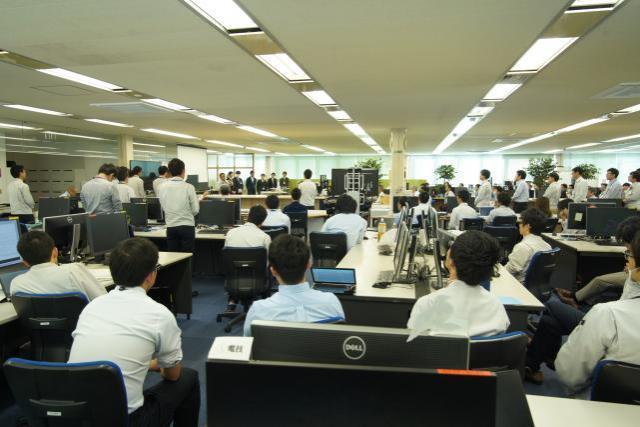
After that discussion, another person raised his hand. The team member, who in addition to working at his regular job is also involved in activities with local communities.
Question:
I work with various local governments to help with regional demonstration trials. I have worked in many places, including areas that have experienced earthquake disasters, and have become acquainted with many different people. I have been thinking about what I can do for local communities based on this experience.
With these thoughts in mind, I was really happy to hear your comment a moment ago about “people setting aside differences.”
While the slow and steady things we can do to help are important, I also think that it would truly be fantastic if we could take even bigger actions.
I would be very interested in hearing your thoughts if you are thinking of something in particular for the future.
Akio:
I urge everyone to continue striving to realize a world you dream of achieving.
As you work to sustain such efforts, when you find your progress stalling, or are stopped along the way, I hope we can all come together to come up with a way to overcome such obstacles.
Because you start with the thought, “I wish we had this thing,” or “wouldn’t it be great if society were like this…?,” the bigger actions you mention will, in the end, start from that “n-1” experience.
Right now, with diversification occurring in all kinds of areas, there is also individuality. Individuality is important, so you don’t want to just dismiss this as “that’s just someone’s opinions,” but rather, value your own ideas, for isn’t it important to take that first step towards accomplishing something?
As I have already said, final responsibility lies with one person at this company, and that is me, Akio Toyoda.
So long as this is clear, I say to everyone¾anything you do is OK.
However, I ask that you please make sure to say that you’re doing things “for others” or “to help make someone else feel good.”
I bring this up with everyone now because I would like to talk to you about something that happened the other day when I went to Subaru.
Do you know why Subaru President Nakamura is going to visit here?
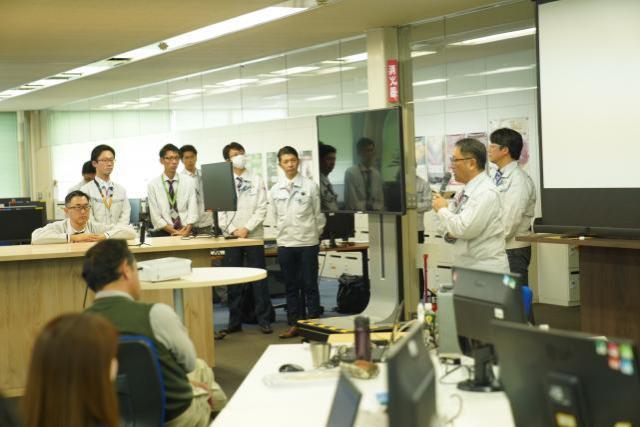
(Team member who asked the question):
Is that to observe the hard work that the people assigned here from Subaru are doing?
Akio:
Yes. But the original impetus for his visit was a woman working in the Subaru labor union.
When I visited Subaru, President Nakamura and I were at their workplace and we had a Q&A session similar to this one. At that time, the woman I mentioned said, “I also do labor union work,” and she asked us a question.
Since she started off with that statement, I wondered if she was going to bring up a request that the labor union had. I had a feeling that this would be the start of labor-management negotiations…
But then, she made a request to President Nakamura, asking him to visit the actual Toyota workplace where their members were now assigned and listen to what they had to say.
I thought, her request is not for herself, but for others. How wonderful… this is a company where members clearly value their colleagues.
As you know, the reply to the spring labor-management negotiations at Toyota was “no.”
This was because there were moments when it felt as though the Toyota labor union side was making statements that were excessively centered on themselves.
Thus, when negotiations were resumed in the fall, I went around to different workplaces to see them with my own eyes.
As a result, Toyota also saw that not all members were just thinking about themselves.
Ultimately, the automotive industry is not feasible without the support of many people. If people around us say or feel that “only Toyota is doing well,” no one will work together with us. Therefore, we must consider what it is that you want to do, and, who is this work really for?”. It is important that this be the core value. This is one thing I do not want to see any of you stray from and I ask that you commit to this.
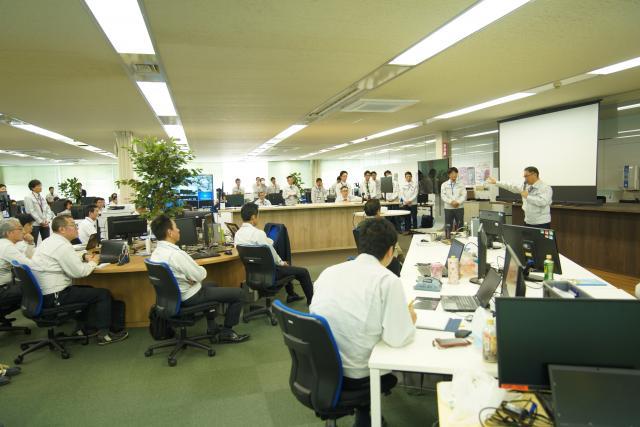
(Team member asking the question):
I would like to talk a little about quality. When you went to the United States to testify at the public hearing, I was in charge of the accelerator. In that sense, as we look towards putting BEVs on the market, I feel very strongly about the responsibility I bear and want to be absolutely sure that a quality problem does not occur. In all honesty, when that accelerator problem occurred, without any exaggeration, I felt that it might put Toyota out of business. This time, with Toyota and Subaru jointly developing a BEV, I think that this will garner a great deal of attention from the public. That is why, this alone, I cannot allow to occur and I am moving forward with development work so that it will not occur. I would like to hear your thoughts on quality.
Akio:
One thing we need to remember is the fact that a car is a dangerous thing. This is an object weighing more than 1 ton that can be driven at speeds over 100 km/hr. It can turn or stop suddenly. Just this alone is hazardous behavior, right? The risks are already there. While cars also spark the emotions of being “fun to drive” and there are things about cars that people enjoy, the fact that we know that the idea of “Fun to Drive” includes an element of risk is what makes it that way. Thus, we must first remember this most crucial thing about cars.
Among the many industrial products out there, the automobile is one that people often attach sentimental value to, and they talk about loving and caring for their cars. Also, another thing is that we entrust our lives to the automobile. Amidst all of this, we now have CASE technologies and various other elements, along with the electric vehicle. If Toyota is the one putting the product out, you can rest assured it will be for no less than one million units. The scale of this represents the reliability planned for by Toyota. There is a sense of security and safety in knowing that Toyota plans for large scale production, and this is something that we should never forget.
With BEVs, one source of anxiety for our customers is the lifespan of the batteries. When a BEV becomes a used car, for example, just how much residual value will be left in that car? Will the owner have to bear the cost of potentially replacing the batteries himself? Let me share an example. First, a new car is purchased. Later, when someone buys it secondhand as a used car, or, in other words, when the car is transferred from its first generation owner to the second generation owner, because often many years have passed for this particular vehicle, the buyer (and seller) might feel anxious as they consider who will need to carry out the required after-service with respect to the car’s batteries.
Understanding where people have anxieties and correctly understanding them will require an effort to identify them one at a time. As we attempt to discover these anxieties, however, we should try to help people understand that when Toyota puts out a vehicle, it does so at a large scale, which ultimately could help protect one million lives. As such, I strongly ask that you keep this in mind as you move forward with development. At the same time, I fear that you may get caught up in that thought resulting in nothing getting done. Therefore, please at least try. It isn’t possible to reach 1 million units right away from your work location in the development process.
Technical development is accompanied by risk, so isn’t that precisely why there is someone who takes responsibility for this? In this case, the person responsible is saying “Go after that challenge.” As long as the product we can create from Toyota can help the lives of one million people, then I urge you to take on that challenge.
Ultimately I will see how that car rides, how it feels, and make a decision about it. Thus, I absolutely do not want you to stop the momentum you have created in taking up this new challenge. There is risk in taking on something new. That doesn’t mean that we do not take up challenges that include risks. No, we take them on. If we do not do this, you can be sure that a Toyota near extinction at a public hearing will surely move in the direction of extinction. That is because we will have stopped pursuing risks and given up on developing new technology.
I don’t want that to happen. In that case, please take on the challenge. However, instead of doing this and feeling, “I did this myself,” I urge you to remain true to the core value of protecting 1 million lives, while also taking on the challenge of coming up with new ideas, and if you do so, then I think you can move forward with a real peace of mind.
(Team member asking the question):
Thank you.
Akio:
Can you do this?
(Team member asking the question):
Yes, with that etched in my mind.
At the conclusion of the Q&A session, Akio joined them for a group photo.
As seen in the photo, there were too many members of the ZEV B&D Lab to fit everyone in the picture. Of all the thoughts shared, Akio’s words, “I will take responsibility, so I encourage you to continue taking on the challenge of doing things for the benefit of society,” helped to create a brighter atmosphere, something that can be seen reflected in the expressions of everyone there.
